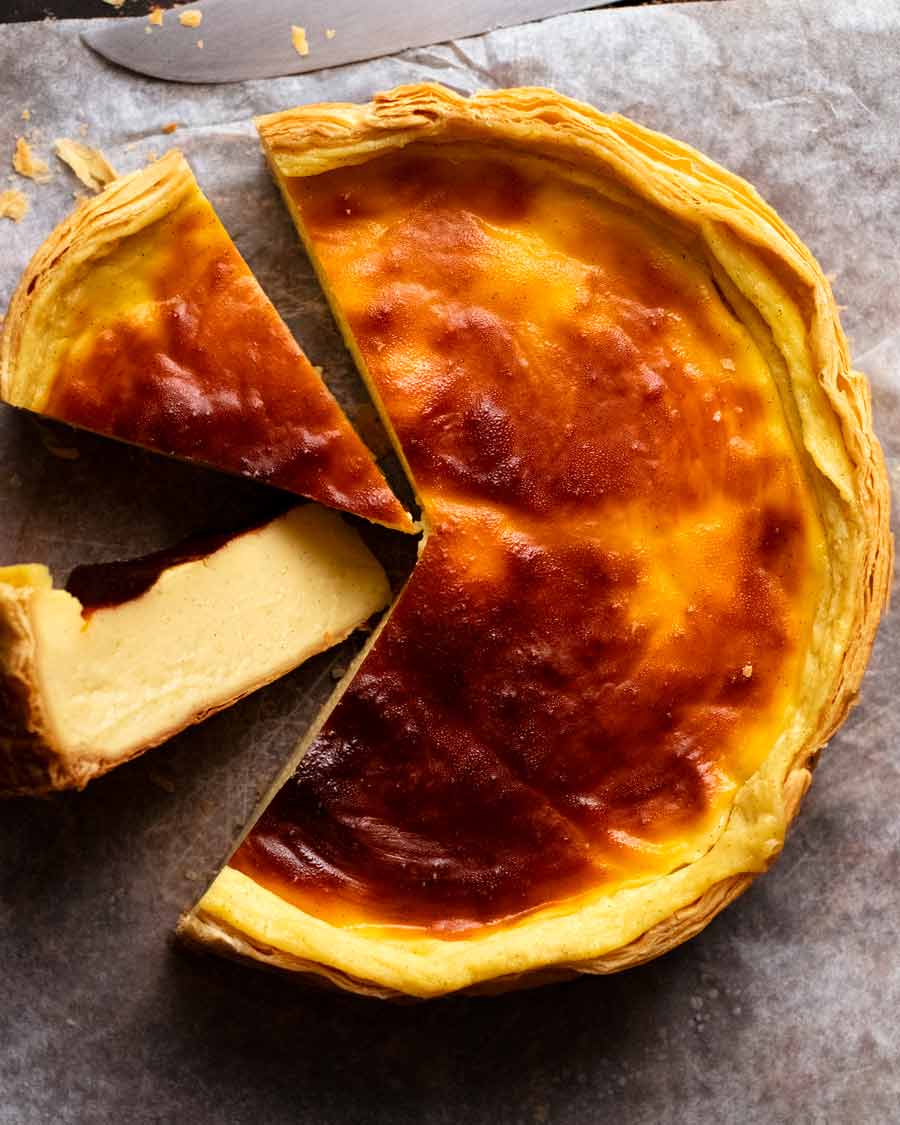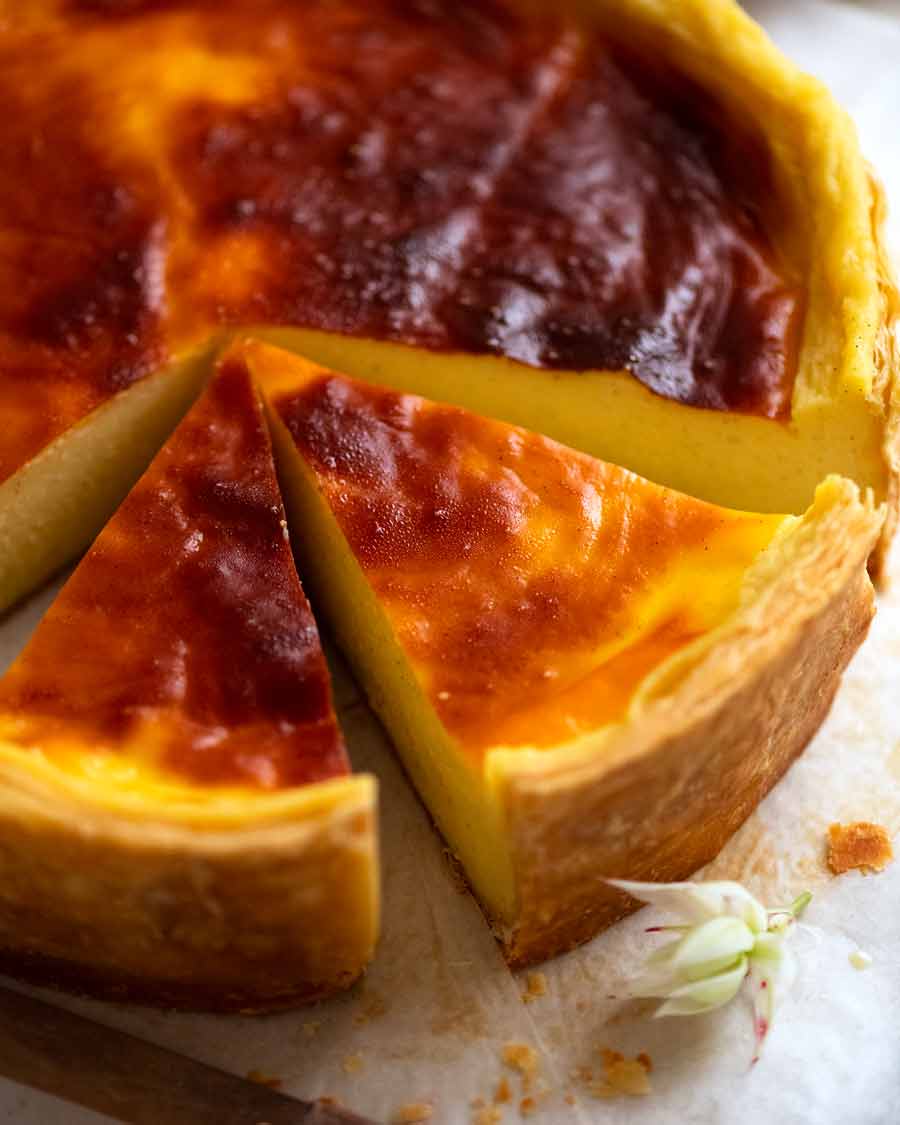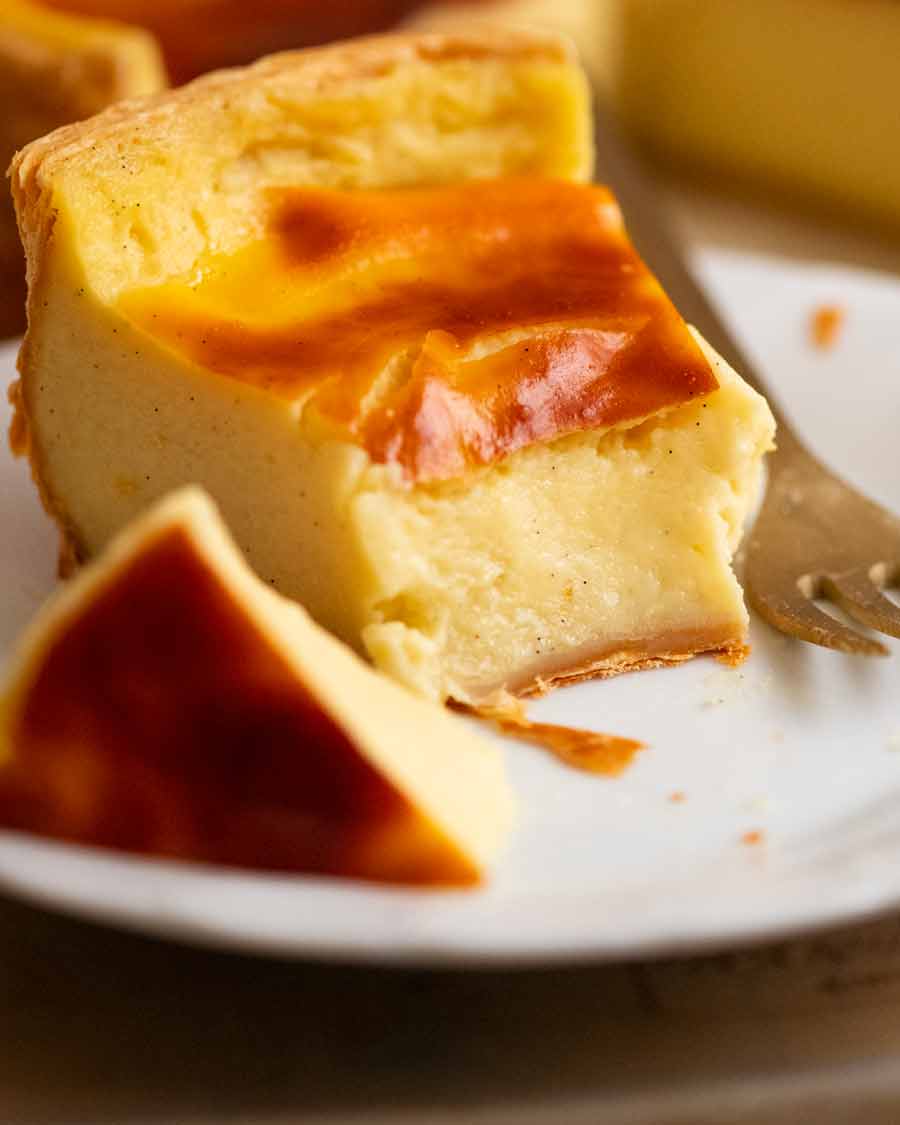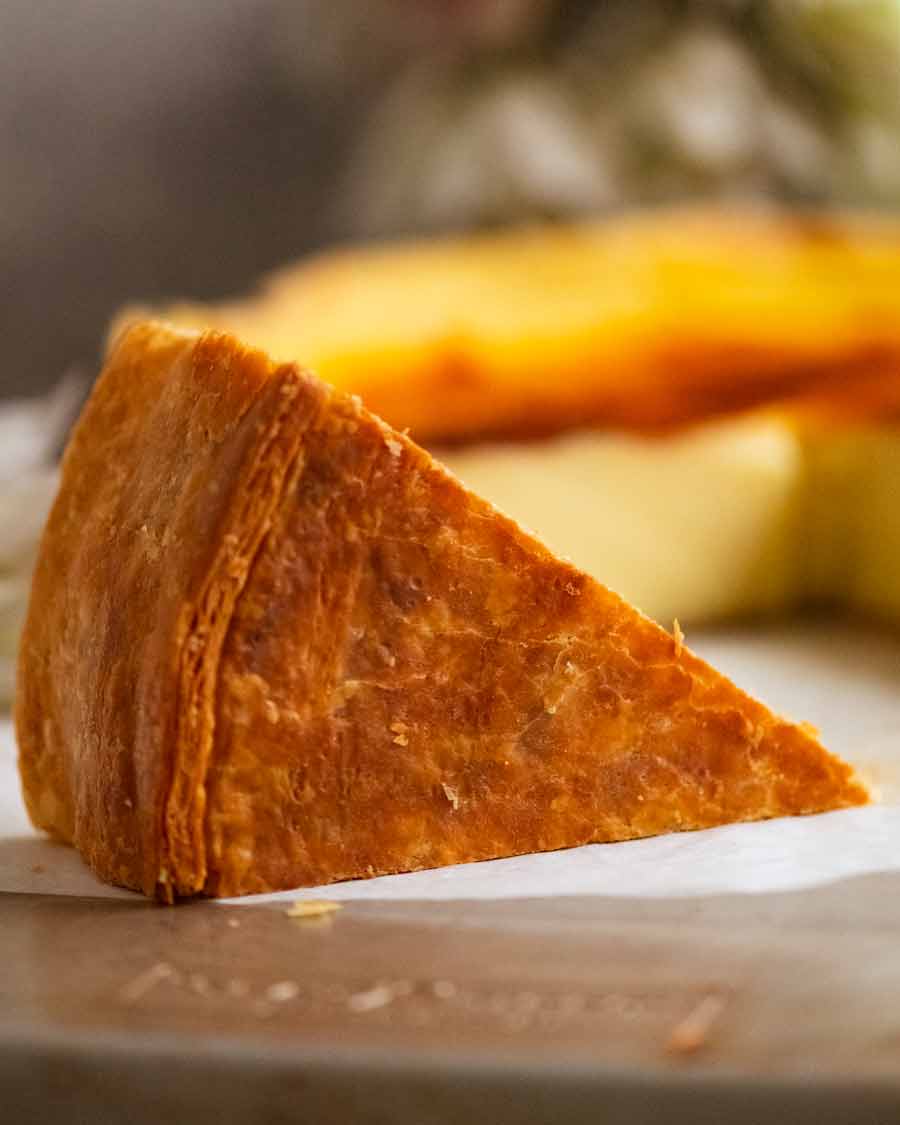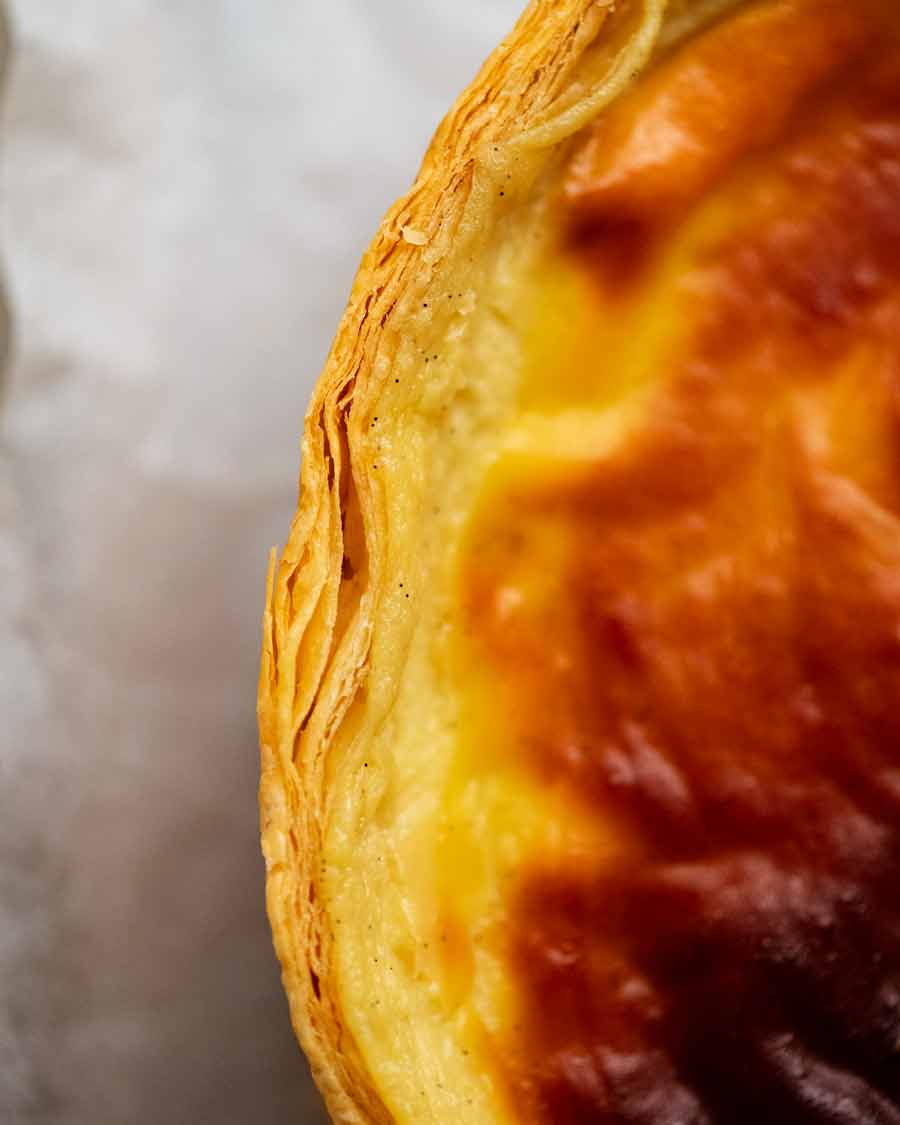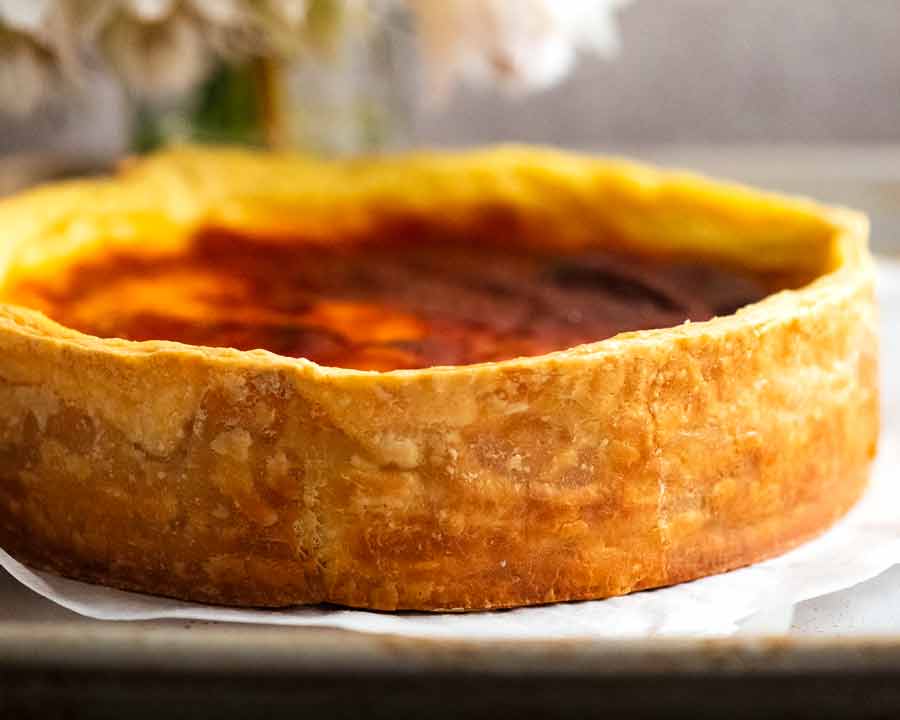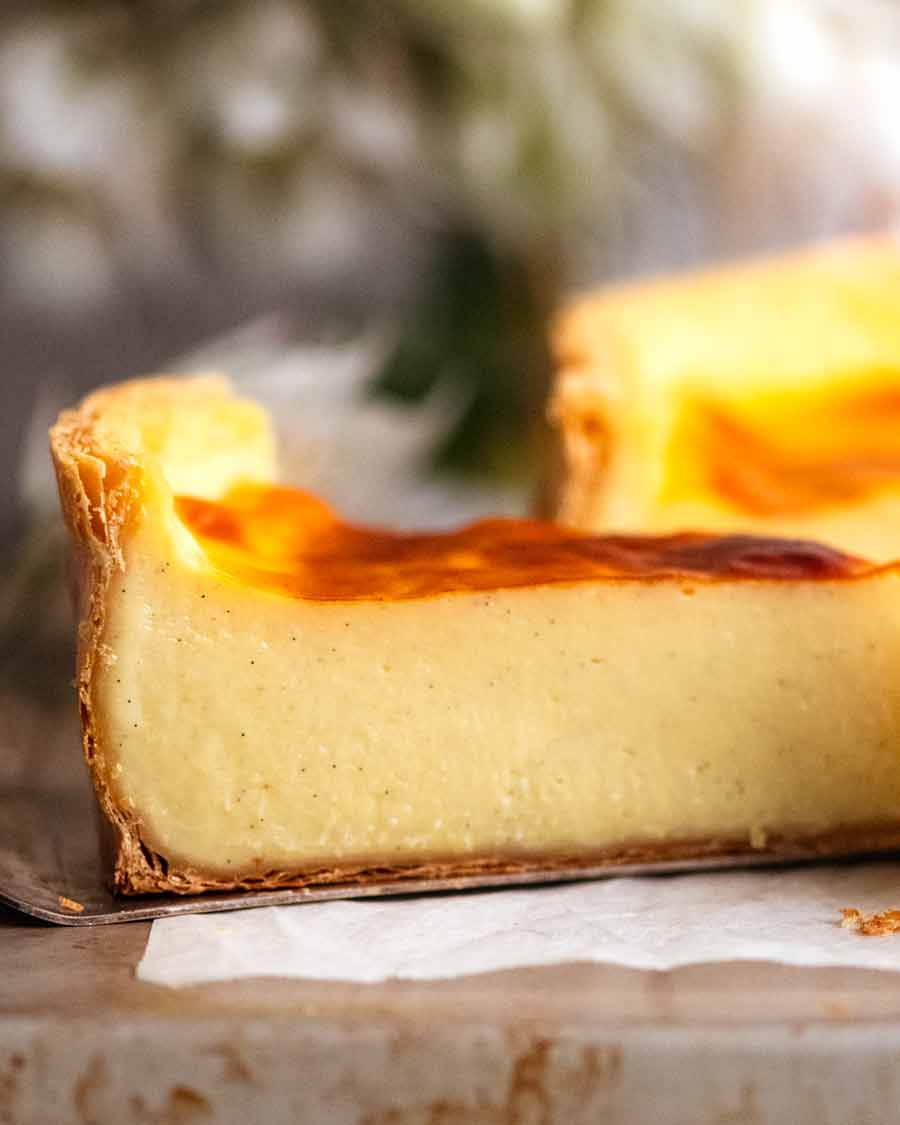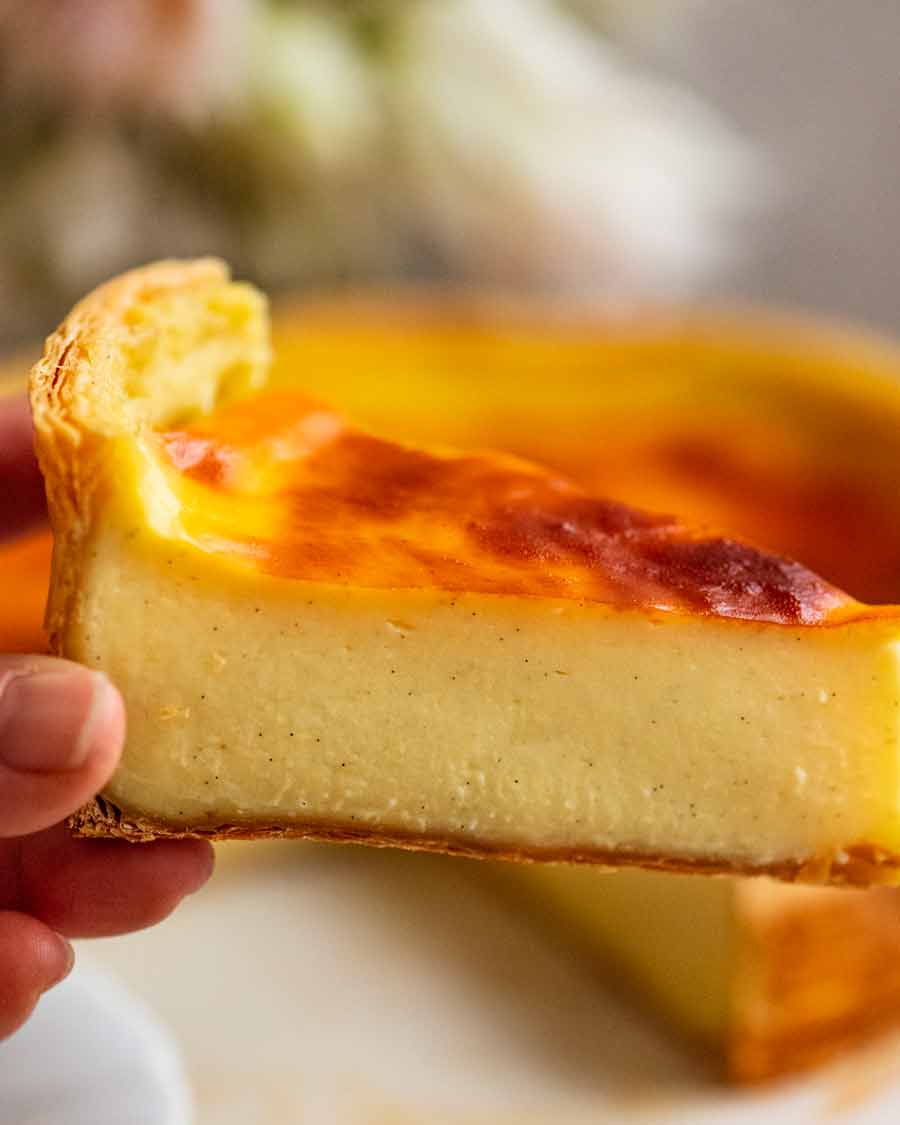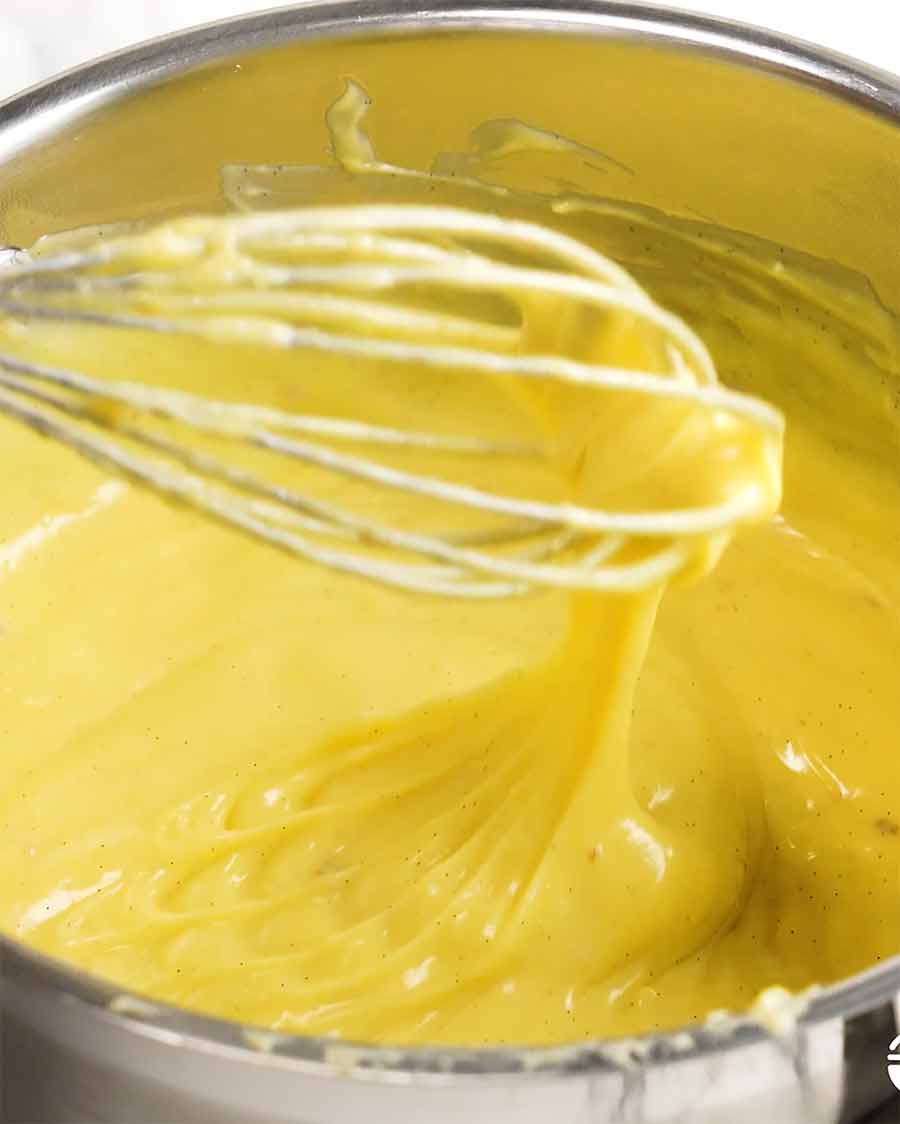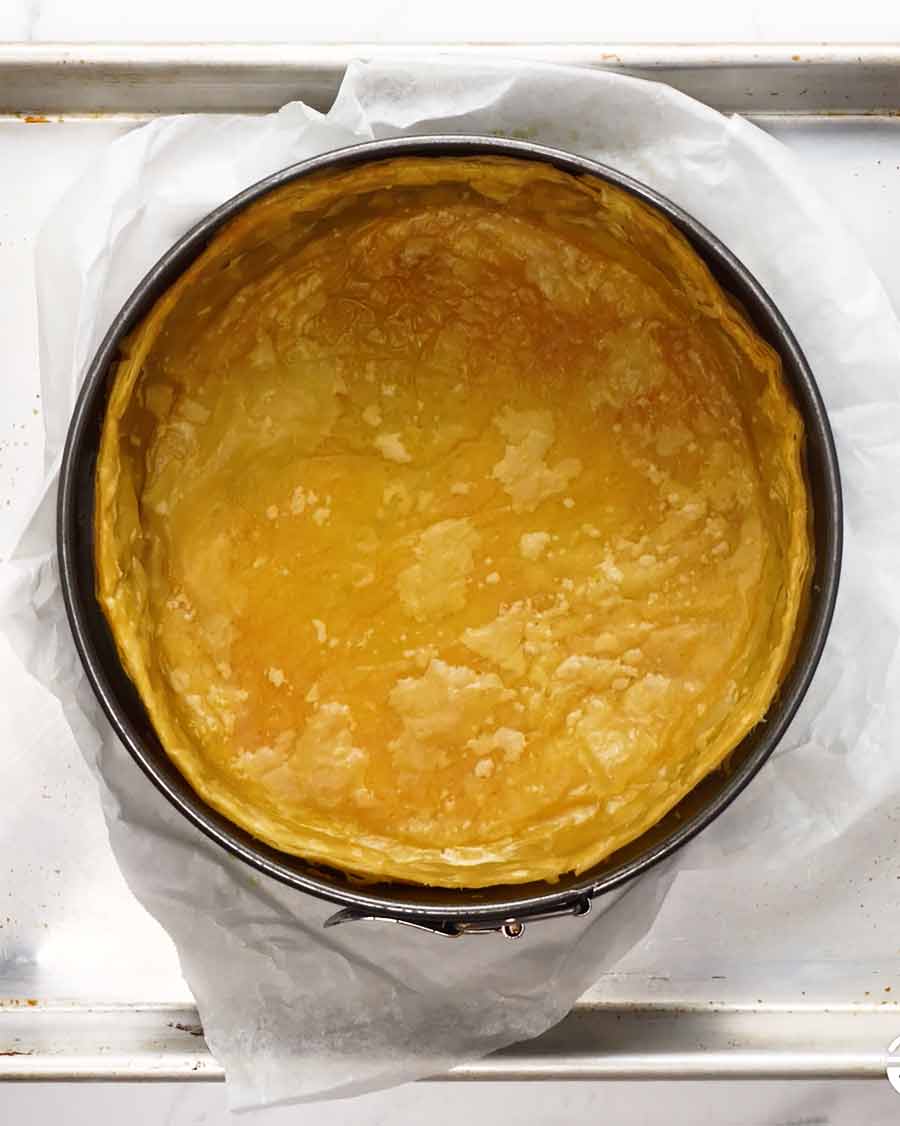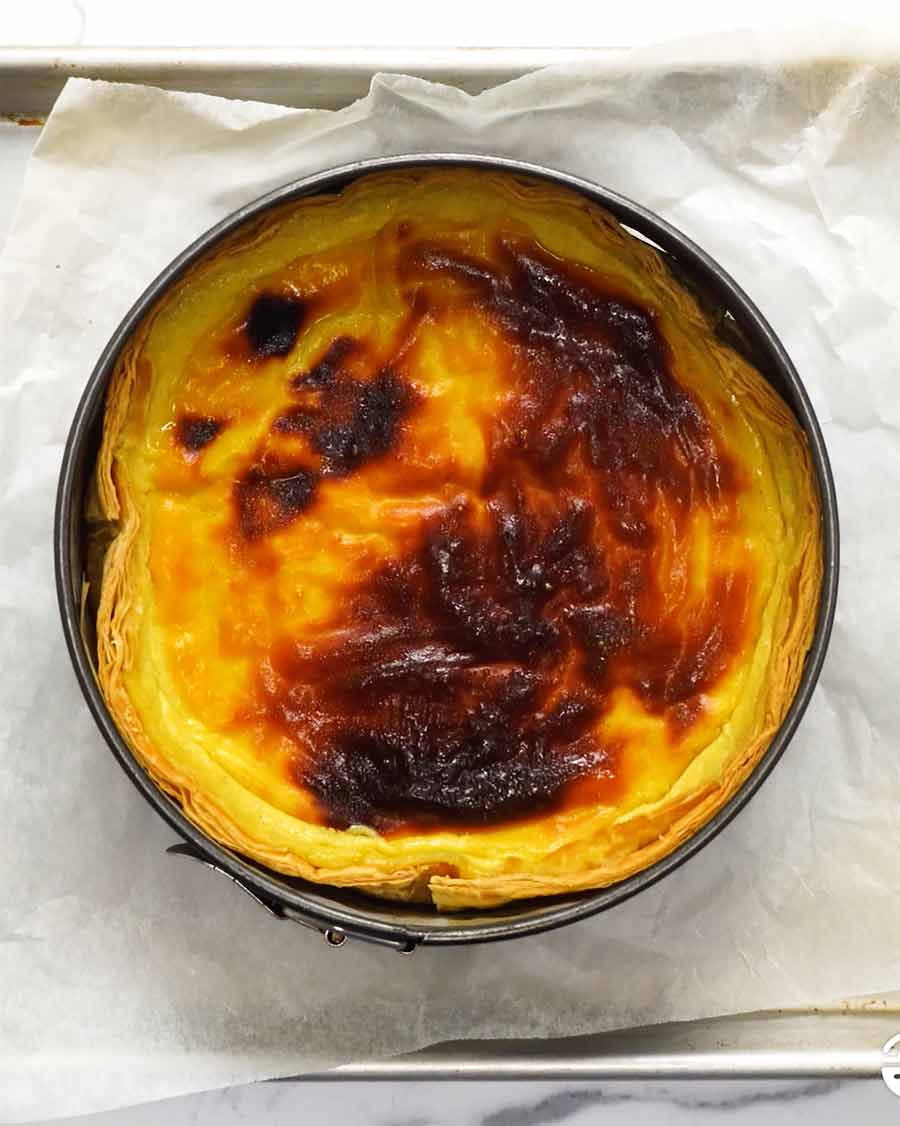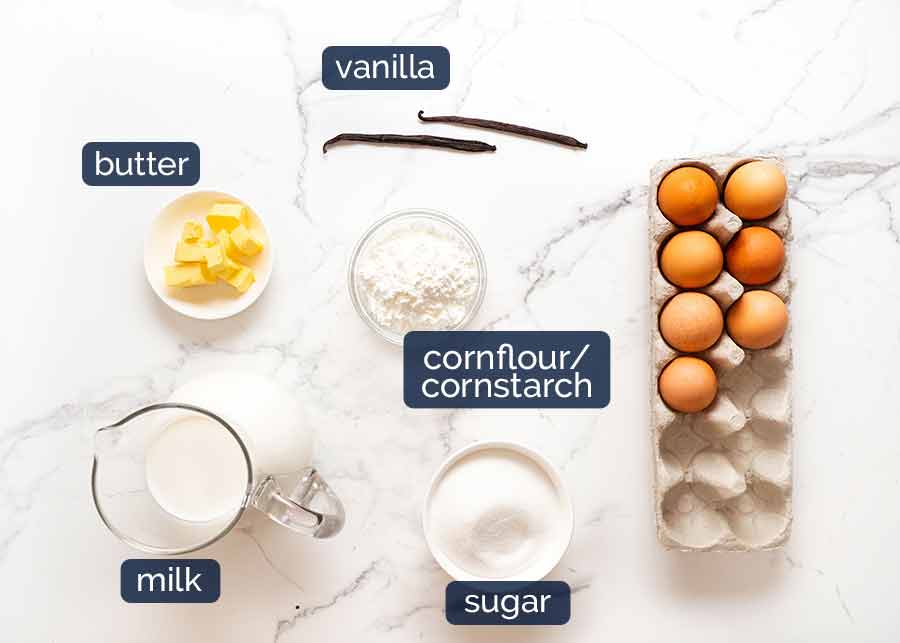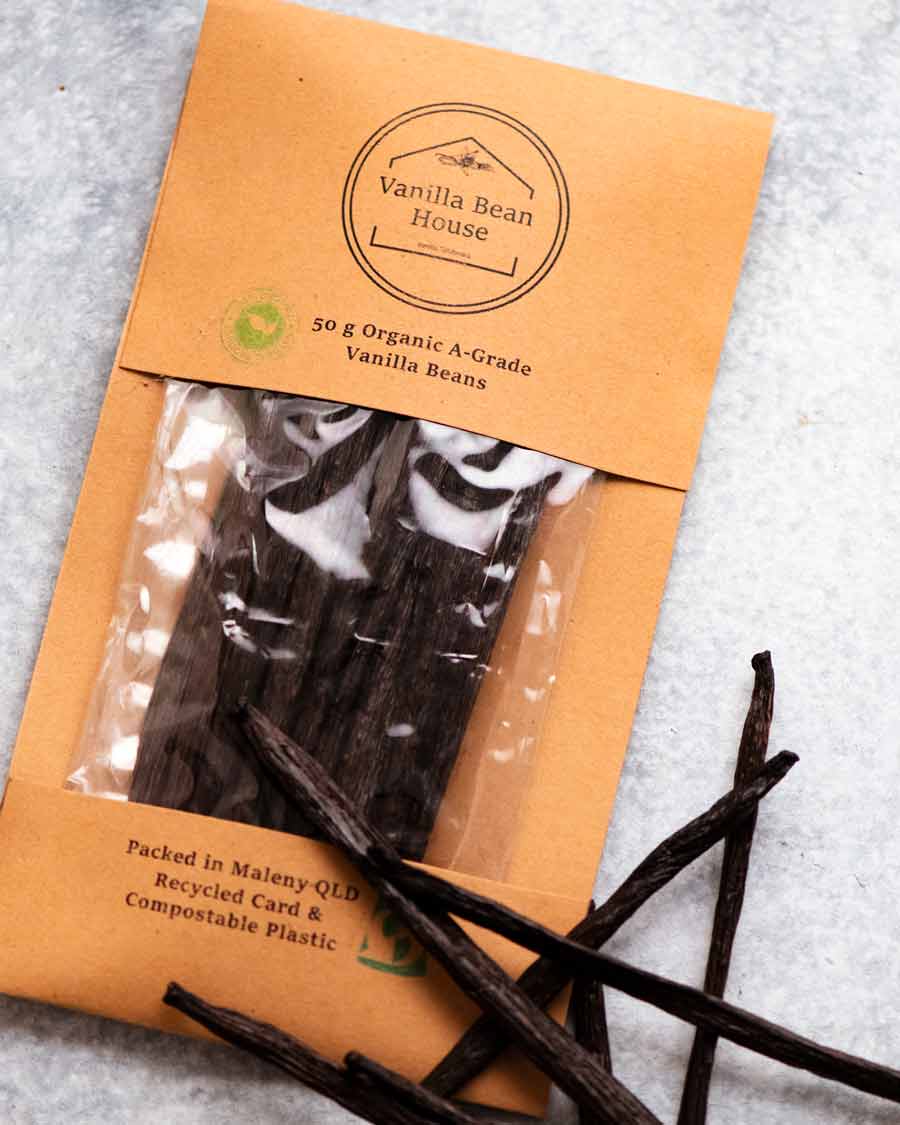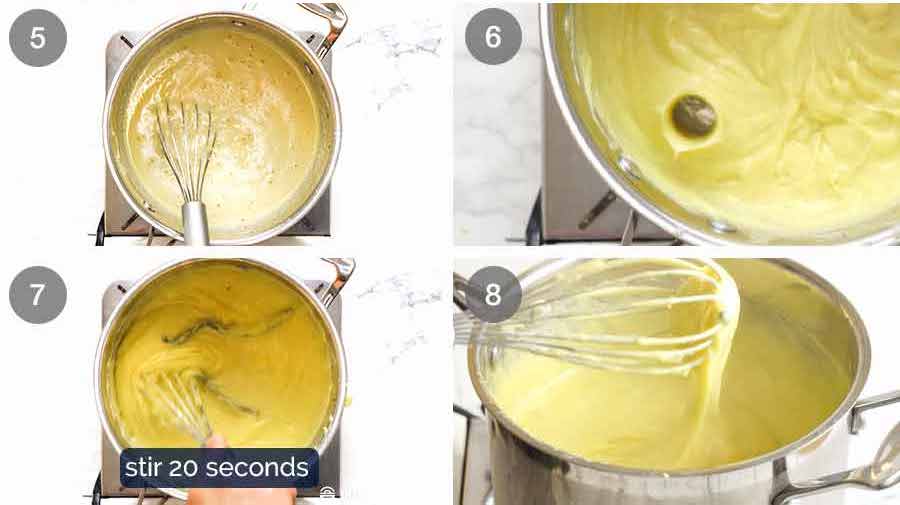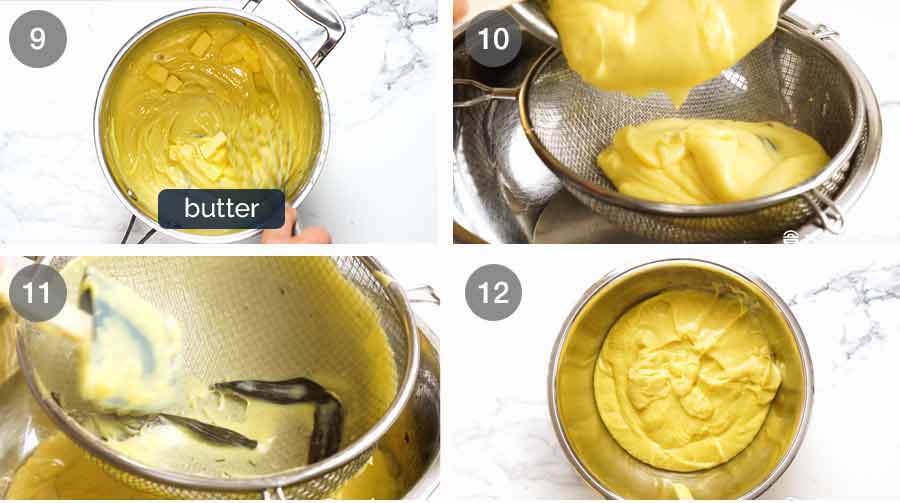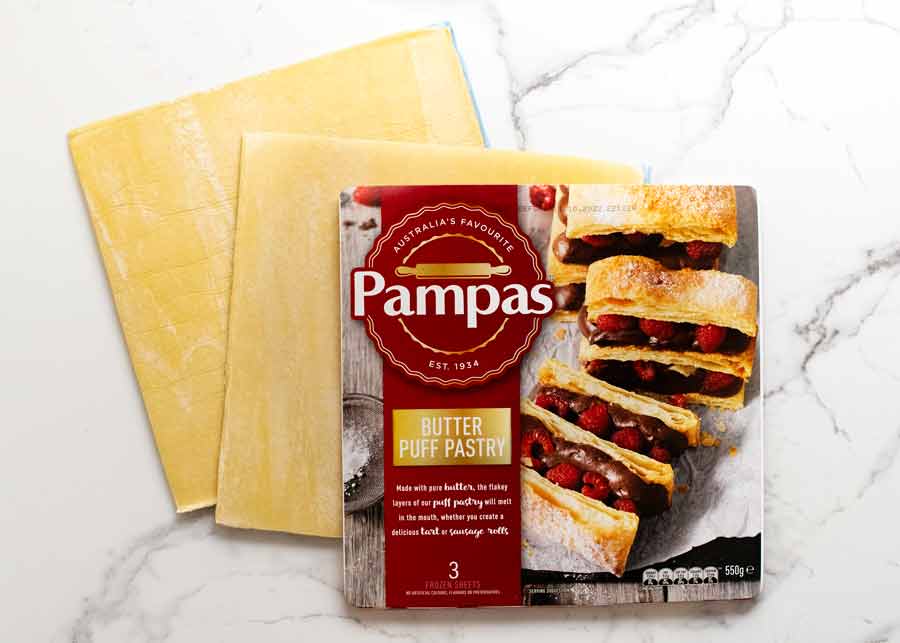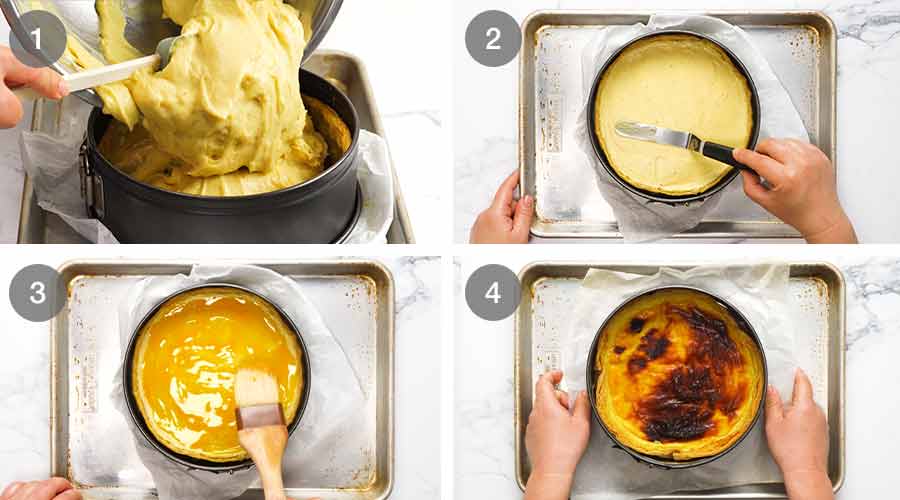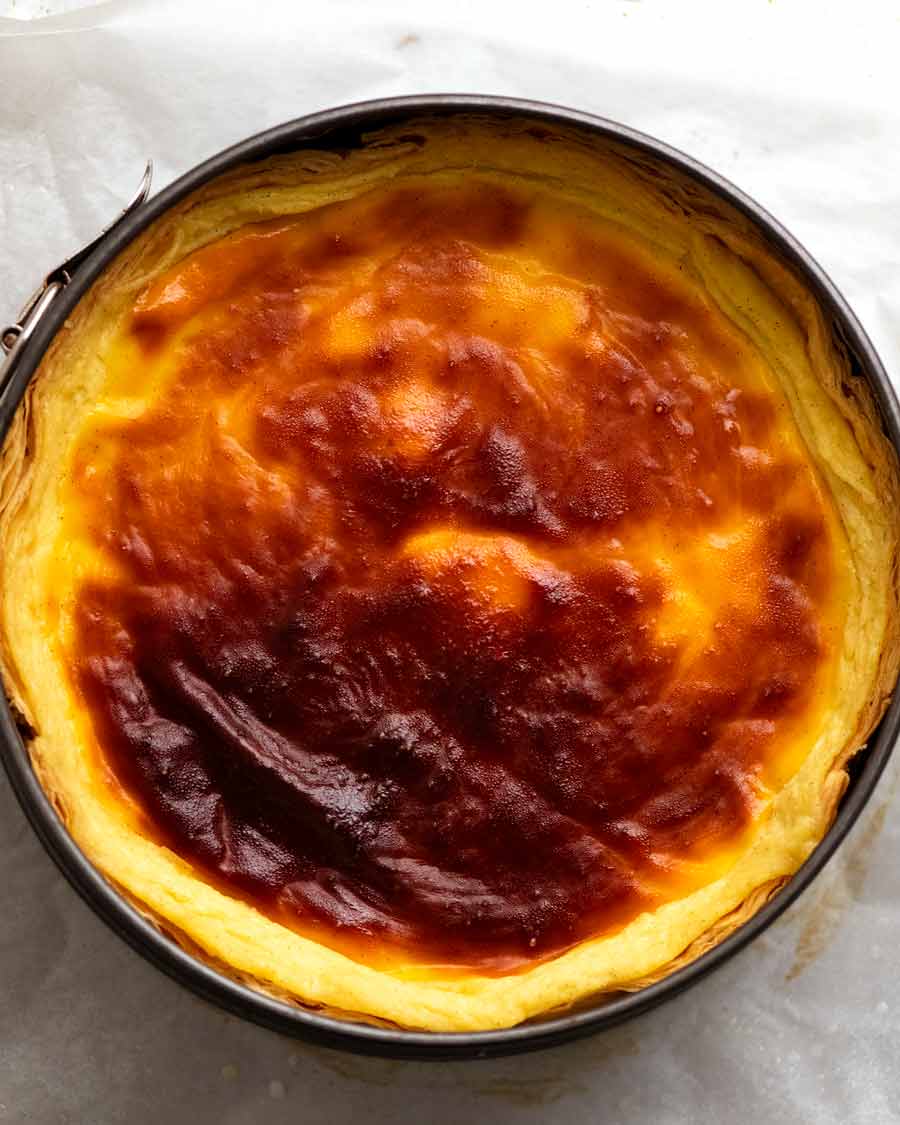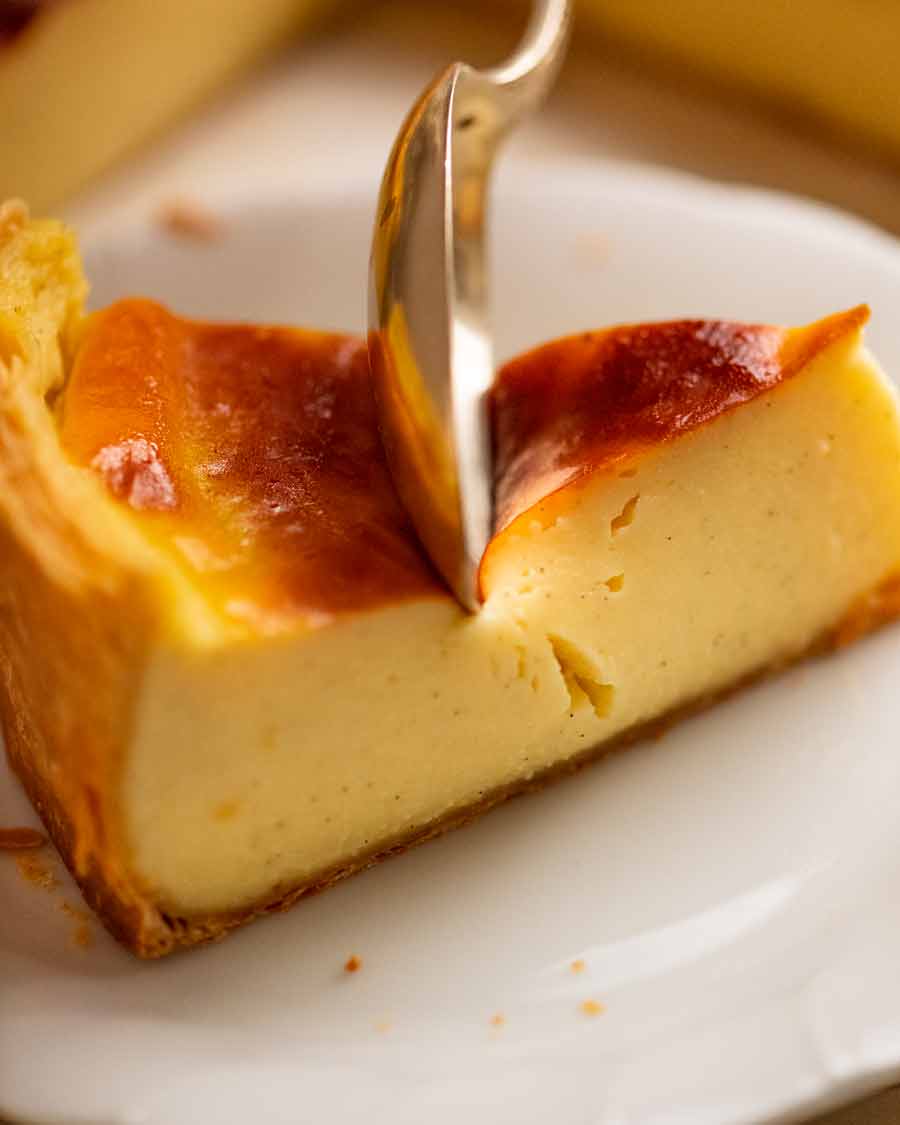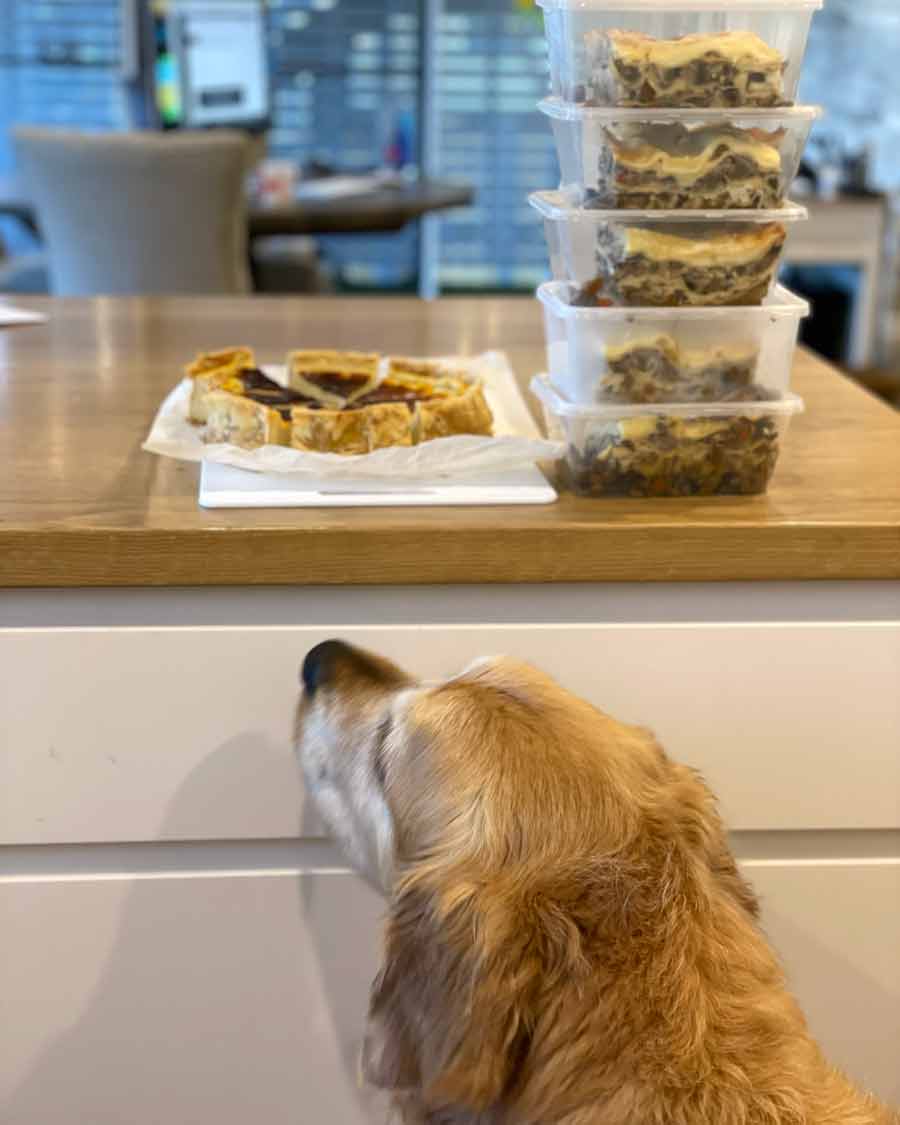To say this thing is magnificent would be the understatement of the year. Words fail me. It’s that good!
Flan Pâtissier – French Custard Tart
Flan Pâtissier is a French custard tart that is made with a pastry crust filled with vanilla custard and baked. Also known as Parisian Flan, you’ll find it in every suburban bakery all across France. It blows my mind to know that this pastry is so commonplace for the French that to them it’s considered no big deal as far as pastries go. To this Aussie lass, it is a big deal. It is phenomenally good. Indescribably great. My dessert discovery of the year. Given especially that it’s a rare find in Australia, I was determined to crack the recipe. With the valuable help of a professional French pastry chef Jennifer Pogmore, I’m happy to report success! Everyone who has tried the 20+ versions we churned out developing the recipe has loved it. They can’t get enough of it. This is one of those recipes I’m so personally proud of because I worked hard to perfect it and do the original justice. And I’m thrilled to be sharing it with you!
About Flan Pâtissier
The custard used for Flan Pâtissier is Creme Patissiere, a rich and creamy vanilla custard used in many desserts in France. It gets its richness from egg yolks which, combined with cornflour/cornstarch, is what makes it set to a perfect consistency such that it can be sliced neatly but melts in your mouth when you eat it. Chef Jennifer Pogmore tells me there are no hard rules in France about the type of pastry used for the Flan Pâtissier crust, it just comes down to the pastry chef making it. In both boulangeries (French bakeries) and patisseries, Pâte Sucrée (French sweet tart crust) is quite common, as is shortcrust and puff pastry. I tried them all. But for me, I can’t look past puff pastry. The contrast of the fine, flaky, buttery pastry with the rich creamy custard just knocks this tart out of the park. And it LOOKS so good too!
Crispy base!!
You’ll love how the base comes out perfectly crispy in this recipe. Here’s a couple of photos so you can inspect them closely and see for yourself!! Not a patch of sogginess in sight: It’s even crisp enough so you can hold the slice cantilevered in your hand. This is by design, because that’s exactly how Flan Pâtissier is supposed to be eaten!
Heads up: This is a long post!
While the idea of making Flan Pâtissier sounds deceptively easy – blind bake a puff pastry crust, fill it with custard and bake it! – the devil is in the detail. This especially applies to those who are not so confident at baking, or are custard first-timers. To this end I’m sharing quite a lot of information in this post, to ensure success for you whether you are an old hand or new to baking. If you are a capable baker, feel free to skip all the detail below and jump right to the recipe or recipe video!
Custard for Flan Pâtissier: Creme Patissiere
The custard for Flan Pâtissier is Creme Patissiere, a creamy vanilla custard that is used in many French desserts. While exact recipes for Creme Patissiere vary depending on the intended use (ie. baked vs not baked; required viscosity for pouring vs piping vs filling vs spreading etc), the base ingredients are almost always the same:
Eggs – Mostly yolks, for richness and also to help set the custard.Leftover egg whites – Here’s my list of what I do with them and all my egg white recipes can be found in this recipe collection. Cornflour/cornstarch – For setting the custard and making it shiny (regular flour makes it dull). Attention FRENCH READERS: Do not use yellow cornflour, use white cornstarch! Vanilla beans – For a beautiful vanilla flavour. I used vanilla beans from Vanilla Bean House (Australian online store) – plump and filled with a generous amount of vanilla seeds! Vanilla bean paste is a good substitute here. Sugar – For sweetness. But not excessive sweetness! One of the things I adore about French desserts is that they are far less sweet than other typical Western desserts. Milk – The liquid for custard. Some recipes also use cream, for added richness. I prefer the mouthfeel of milk enriched with butter. Butter – As above, to enrich the custard.
1. How to make the custard for Flan Pâtissier
The custard for Flan Pâtissier uses both egg and cornflour to set it. There’s an ideal balance of the two that will achieve the right richness and set consistency so the tart can be cut into neat slices, yet the custard melts in your mouth when you eat it. I tried quite a few combinations before landing on what I think is the perfect balance! Leftover egg whites – Here’s my list of what I do with them and all my egg white recipes can be found in this recipe collection.
Infuse milk with vanilla
Eggs and cornflour mixture (thickening)
Cook custard to thicken
Butter, straining and cooling
Cooling custard
Custard done, now it’s on to the pastry! TIP: Keep an eye on it as the milk starts to get hot because milk loves to boil over quite quickly!
- Adding a bit of sugar in this step helps to ensure the milk doesn’t scald on the base. Don’t worry, there’s no risk of accidentally scrambling the eggs with the hot milk because it cooled in the 10 minutes we left it to infuse with the vanilla! However we still temper the mixtures in this step as an extra layer of safety. 12 – 24 hours in fridge recommended – Refrigerating the custard overnight will allow for optimal flavour development (a pro tip from professional French pastry chef!). But if you are in a hurry, you can proceed with the recipe as soon as the custard has cooled to room temperature, ie. skip the fridge time. To be honest, I don’t think most people will be able to tell the difference. But I wanted to share this recipe made the proper way!
2. Flan Pâtissier puff pastry crust
As noted at the beginning, there’s no hard and fast rule about what crust should be used for a traditional Flan Pâtissier, though Pâte Sucrée (French sweet tart crust) and puff pastry seem to be the most common. For me, I can’t go past puff pastry for the delicious contrast of buttery, flaky pastry and the creamy, silky custard. These days, store-bought puff pastry is actually quite good quality. Even the standard brands we find at grocery stores here in Australia such as Pampas are perfectly acceptable. My only rule however is it must be butter puff pastry. Butter has much better flavour and puffs up better than the cheaper margarine/oil-based puff pastry! It’s absolutely worth the extra coin.
Best pan: Springform cake pan with no base
The best way to make the crust for Flan Pâtissier using puff pastry is to use a springform pan WITHOUT the base. We’re going to bake it directly on the tray which is the trick that ensures the base is 100% crispy once filled with custard – this is a big part of the awesomeness that is Flan Pâtissier! Note: Professional pâtissiers and pastry chefs use tall tart rings which are purpose-built rings without a base. A springform pan ring works just as well for this recipe. 🙂
Cut base and sides
TIP: Work with puff pastry that has thawed just enough that it’s still stiff but workable, and JUST pliable enough to line the springform pan. This is for ease of handling for this tart which has unusually high sides. Fully thawed puff pastry = floppy and sticky = impossible to line the tin sides and very messy to fit the base in.
Line sides
Base
Prick and freeze
Blind baking the crust
Blind baking is an essential step to ensure that the crust bakes up nice and crispy. Nobody wants a soggy crust with their custard tart!! TIP: Using a long knife, cut straight down into the pastry rather than slicing by dragging the knife along the pastry. This will preserve the beautifully flaky layers on the rim of the crust, like pictured in this post. Baking paper actually isn’t essential, you could just butter or spray the sides with oil. However, the puff pastry tends to look more rustic (ie. flaky rather than neater) if you skip the baking paper. Remember, work with stiff but just-pliable puff pastry else the sides will flop! Press seams – At this stage, just press the seams; we will seal it properly later. Right now, we want to work fast while the pastry is still as frozen as possible. The bonus is that the firmed crust doesn’t get all scratched up and dented when we line with paper and fill with baking beads to blind bake!
Baking the Flan Pâtissier
We are on the home stretch here! So close are we to be able to taste the magic that is Flan Pâtissier! Filling with baking beads – Remove the fully frozen crust from the freezer. Tear off 2 x 60cm / 2 foot-long sheets of baking paper (parchment paper) then scrunch them up in your hands. This makes it easier to fit inside this taller than usual pastry. Lay one sheet of paper on top of the other but perpendicular to it (ie. in a “X”) inside the crust shell. Then fill with baking beads or dried beans* right up to 1cm below the rim of the pastry. Gently but firmly press the beads down and outwards to ensure it is pressed into the corners and against the springform pan walls to help ensure the pastry sides set properly without flopping inwards. No baking beads? Large dried beans work almost as well. They do not conduct heat as well as purpose-made baking beads and they are a little lighter. So the pastry does shrink a little more but it’s not significant. Avoid using rice, lentils or other small dried things that other recipes say are ok to use. Their small size means they pack together too densely, blocking heat from getting through to the inside of the pastry so the sides don’t set properly. (A lesson I learned the hard way!) Take care during this step – nobody wants sizzling hot little beads bouncing all over their kitchen floor … sounds terribly dangerous! I pour the beads straight into a metal bowl to cool. Cool for 10 minutes. Again, this is just an extra crispy-base insurance policy. And with that, WE ARE DONE!! Time to devour this custardy masterpiece!! Leftover custard? The recipe makes the right amount of custard assuming you had no pastry shrinkage or the sides did not slouch when you blind baked your pastry crust. If yours did shrink a bit – and for most people, I expect that it will – then you may have custard leftover. Ideas to use up: as a general-purpose dolloping custard on anything; make mini custard tarts using puff pastry scraps (20 minute bake at 180°C/350°F); fill ramekins and bake; or simply eat with a spoon! Cool on the counter for 4 to 5 hours, then loosely cover and refrigerate for 6 hours+ in the springform pan. It’s important to fully cool to room temperature before refrigerating or condensation will compromise the crispiness of the puff pastry. Phew! I know this was a big knowledge dump. But as I explained earlier, I wanted to provide enough information so even less experienced bakers can feel confident enough to make it. And honestly? Having made this over 20 times in the last few months, I can say this for sure: The only thing that can really go wrong is that the custard doesn’t set so it gloops everywhere when you cut into it. The only way that can happen is if you mis-measure the custard ingredients, if your oven runs cooler than the temperature dial says (I recommend you use an oven thermometer if you have any doubts) or if you do not refrigerate the cooked Flan Patissier to allow it to set. Even lamentable pastry work can be salvaged from potential custard leakage issues by plugging holes with leftover pastry! As for everything else, it’s a walk in the park. OK sure, your pastry shell might look a little more rustic than mine. I certainly had my fair share of more rustic-looking crusts on this journey! But that doesn’t affect flavour or the eating experience at all. And that, my friends, is just about all I can think of that could possibly go wrong. So really, don’t let the length of the recipe card daunt you. The detail is there to guide you through this. It might take you longer than you expect. But I promise, it really is not that hard. And it is so, so worth it! – Nagi x
Watch how to make it
Video error! Once the empty pastry crust is baked, it just needs to cool for 10 minutes. It does NOT need to go in the fridge for 6 hours. Oops, sorry, I will replace the video shortly. Follow the written recipe please!
Life of Dozer
Flan Pat or Lasagna?? Flan Pat. Every. Single. Time.
